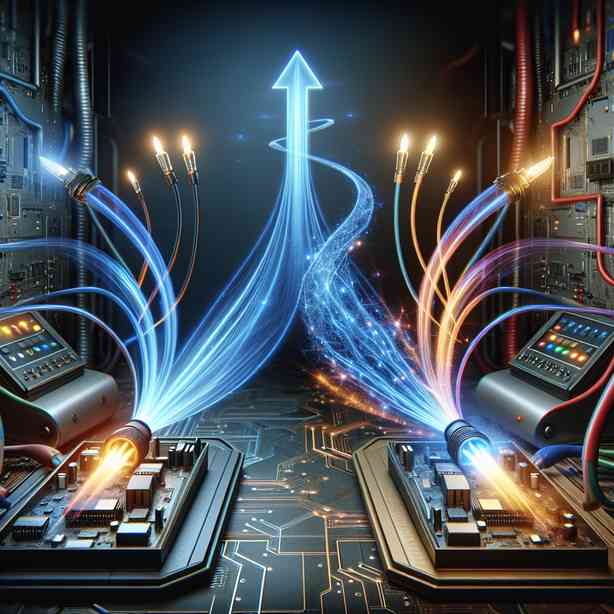
When it comes to the technology of connectivity, the importance of cable length is often overlooked. Many individuals assume that once they’ve purchased a cable that meets their particular data transfer or power requirements, the actual length of the cable won’t have any significant impact on performance. However, this perspective can lead to complications in various scenarios, from home networking to professional applications. In this article, we will explore why cable length truly matters, examining its effects on signal quality, data transmission speeds, and overall system reliability.
Whether you’re connecting devices in your home, setting up a gaming console, or managing a complex network in a business environment, the length of the cable you choose plays a critical role in how effectively components communicate with each other. The physics behind electrical signals reveals that as cables increase in length, they introduce several variables that can deteriorate performance. Understanding these variables can help users make more informed decisions about their cable selections.
Signal degradation is one of the most significant problems associated with longer cables. All types of cables—including Ethernet, USB, HDMI, and power cables—experience some level of signal loss as distance increases. This attenuation occurs because electrical signals lose strength over long distances due to resistance and capacitance within the cable.
In the case of Ethernet cables, standards dictate a maximum length of 100 meters for optimal performance. Beyond this length, the speed of data transmission can diminish drastically, affecting the overall efficacy of a network. An important factor here is the type of Ethernet cable being used. For instance, a Cat5e cable can support up to 1 Gb/s speeds, but exceeding the specified length can result in dropped packets and connection issues. Therefore, understanding the limitations of the cable type and its lengths are crucial for maintaining an efficient network.
Another critical aspect associated with longer cable lengths is latency. As distance increases, the time it takes for data to travel from one endpoint to another also increases. This can become particularly problematic in applications that require real-time data transfer, such as online gaming, video conferencing, or financial trading. In these scenarios, any added latency can lead to a noticeable delay, hindering user experience and potentially resulting in significant consequences in time-sensitive situations.
Furthermore, cable quality becomes increasingly important with longer lengths. High-quality cables made from superior materials can mitigate issues associated with signal degradation and ensure better performance over distance. Investing in well-manufactured cables can save users from frequent replacements and the frustrating troubleshooting processes that often accompany poorly constructed options. If users take the time to choose cables that adhere to industry standards and are designed for the specific application, they will likely enjoy better levels of performance, even over substantial lengths.
It’s also essential to consider the environment in which the cables will be used. Environmental factors such as temperature fluctuations, exposure to sunlight, or electromagnetic interference can affect both the length and quality of cable performance. For instance, running cables along walls or through conduits that do not provide adequate shielding could lead to increased noise levels, which may compound the effects of length-related attenuation. Therefore, it’s advisable to not only select the appropriate cable length but also to ensure that it is installed in favorable conditions that can help maintain its performance integrity.
Beyond networking cables, cable length is also a critical factor when it comes to audio and video connections. HDMI cables, for example, are used to transmit high-definition video and audio signals. While standard HDMI cables can support distances of up to 15 meters without any loss of quality, longer runs might necessitate the use of active HDMI cables or signal boosters to maintain performance. Users must also consider the impact of longer cable lengths on the signal integrity in high-resolution formats, where even minor degradation can result in noticeable quality losses in video and audio.
Furthermore, users should be aware that the length of power cables is just as important as data cables. With power cables, too long a length can lead to Voltage Drop, where the voltage decreases along the cable length, resulting in insufficient power reaching the device. This is especially critical for high-power applications like appliances or industrial machines. Ensuring that power cables are appropriately sized and of adequate length can prevent operational issues and extend equipment lifespan.
In summary, cable length affects multiple factors that are vital for effective performance in various applications. From signal degradation and latency to environmental factors and cable quality, every consideration contributes to the overall efficiency and reliability of communication between devices. Therefore, when you’re making decisions regarding cable purchases or installations, it’s essential to think beyond merely fulfilling your immediate requirements and instead focus on the long-term implications of your choices.
Choosing the right length of cable necessitates balancing your specific needs with an understanding of the physical limitations of signal transmission. By educating yourself on how cable length impacts performance, you empower yourself to make smarter purchasing decisions that will promote stable and effective connectivity. Whether in a personal setting or a professional environment, appreciating the nuances of cable length can lead to significant improvements in system performance and user experience. Pay attention not just to the specs of your cables but also to the environmental context in which they will be used. This holistic approach will ensure that you achieve optimal connectivity, reliability, and longevity in your electronic setups.


